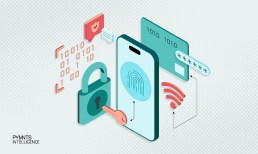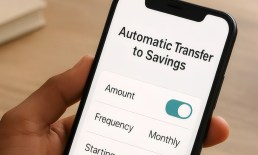No industry has felt the effects of the coronavirus crisis more than the healthcare sector. In addition to the obvious pressures of a surge in personal protection equipment (PPE) demand, intensive care services and vaccine innovation, social distancing orders have introduced new service models that will likely alter the way providers operate for years after the pandemic comes to an end.
All those virtual care visits embraced by patients and doctors alike aren’t just impacting the healthcare space’s front office, however. A digital-first care strategy has ramifications all the way through the back office, according to R.J. Ancona, vice president and general manager, B2B, global merchant and network services at American Express.
Accounts payable (AP) and accounts receivable (AR) are among the most heavily impacted by this trend, he recently told PYMNTS, with the relationship between hospital buyers and suppliers now caught in the crosshairs of modernization efforts.
“As patient care has gone more and more digital, AP and AR automation tools will become critical to be able to keep up with that digitization,” explained Ancona.
The Digital Surge
The coronavirus forced healthcare providers to go virtual at record-setting speed. According to the Journal of the American Informatics Association, one healthcare center in New York saw a whopping 4,345 percent increase in virtual non-urgent doctor visits from March 2 to April 14, 2020.
Advertisement: Scroll to Continue
It’s an eyebrow-raising statistic, but according to Ancona, this digitization push was underway well before the pandemic hit. But just as the pandemic accelerated this trend on the patient-facing side of operations, many healthcare providers have similarly accelerated efforts to digitize back-office workflows, like billing and B2B payments.
And with virtual care visits now the norm, accounts payable and accounts receivable departments are feeling the pressure to transform digitally, too.
“Even pre-pandemic, healthcare providers had to worry about whether and when they would get paid,” said Ancona. “Slow, sporadic payments were certainly commonplace in the healthcare industry.”
The pandemic elevated the need among industry players to digitize to accelerate the flow of funds from one entity to another, as professionals could no longer enter offices and shared service centers to receive or send paper checks in the mail.
With AR and AP automation and optimization now climbing to the top of the priority lists, the healthcare sector appears eager to move forward in its modernization push. Yet going it alone may not be the best strategy, Ancona warned. Merely migrating to ACH payments in lieu of checks fails to address one of the most important requirements for an effective AR/AP strategy in the healthcare space today: meeting the needs of both buyer and supplier.
Creating A Win-Win
Placing buyers and suppliers on even ground in the B2B payments space has always been difficult. Both sides wish to maximize cash flows and savings, yet often through contradicting means. In an industry where B2B relationships form the foundation for patient care excellence, a one-sided AP or AR strategy is no longer acceptable.
Collaborating with service providers like American Express can help hospitals and healthcare suppliers find the win-win scenario they seek, said Ancona.
“This can quickly accelerate digital adoption if done correctly and with the right partners who know that entire ecosystem,” he said, noting that these strategic partners can guide entities toward the right combination of technologies to not only replace paper-based workflows but actually strengthen the buyer-supplier relationship through improved data connectivity and communication.
Artificial intelligence (AI) is also an increasingly important component of optimizing AR and AP workflows to create a digital ecosystem of buyers and sellers in the healthcare space. According to Ancona, “at the core of AI is driving efficiencies and using data.”
The technology’s value lies in its ability to take data that has been digitized and use it in ways that can be beneficial for both buyer and supplier. He pointed to the partnership American Express has with HighRadius, which wields AI to predict client payment dates, identify accounts and invoices that may be high-risk for late payments, and suggest optimal collections strategies. This visibility can help suppliers recognize opportunities to offer early payment discounts to certain buyer segments.
When combined with virtual payments technologies, reconciliation solutions and the willingness to collaborate with business partners and service providers alike, the healthcare arena can not only usher itself into the digital age but ensure everyone involved can benefit from the evolution already underway.
“Certainly, buyers should feel free to use any form of payment that a supplier accepts without being penalized for the way they want to pay,” said Ancona. “That being said, in an increasingly digital ecosystem, there are many solutions that offer benefits to both buyer and supplier at the same time. That’s a trend we continue to see more and will be critical as the healthcare payment infrastructure evolves.”



